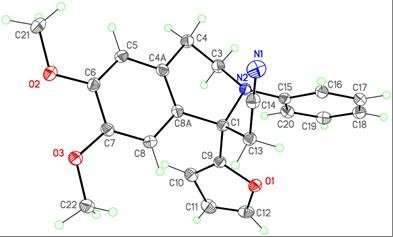Scientists synthesize analogues of substances used in pharmaceuticals

RUDN University chemists have synthesized new isoquinoline derivatives. Due to their biological activity, these compounds have applications in new drugs, including antispasmodics and bactericidal agents. Additionally, in the future, they could contribute to the treatment of Alzheimer's disease. The scientists presented the results of their experiments in Mendeleev Communications.
The researchers studied the reaction of isoquinolines with dehydrobenzene. The novelty of the study is in the use of the latter intermediate compound, which has recently attracted the attention of scientists around the world. An important advantage of this hard-to-synthesize and short-lived (rapidly decaying) compound is its high reactivity. To obtain the maximum yield of 1-cyanomethyl-substituted isoquinolines, the researchers determined optimal reaction conditions and developed a new method for isolating its products.
The scientists started by mixing reagents that allow the synthesis of dehydrobenzol in situ, and then added isoquinoline. In order to follow the reaction and see how much it was realized, they used a thin-layer chromatography method (plates with alumina or silica gel applied). When the complete conversion of the starting reagents occurred, the reaction was terminated. Then, to isolate the desired compound, they used a column chromatography method. Glass tubes were filled with the carrier (silica gel), and then the substance was introduced; everything was washed with the solvent to realize a purified substance. Finally, the scientists removed the solvent, crystallized the solid, filtered the crystals and measured their melting point, and then the substance was identified by NMR spectroscopy and mass spectrometry.
"At our department, we can find out whether the compound is an inhibitor of acetyl- or butyrylcholinoestearases. If so, it could potentially help in the fight against Alzheimer's disease," Borisova noted. In the future, the researchers plan to undertake further research on reactions of nitrogen-containing heterocyclic compounds, including isoquinolines with alkynes and alkenes in order to synthesize potentially biologically active compounds.
More information: Natalia I. Guranova et al, Reactions of 3,4-dihydroisoquinolines and dihydrothieno[3,2- c ]pyridines with benzyne, Mendeleev Communications (2017). DOI: 10.1016/j.mencom.2017.09.026
Provided by RUDN University





















